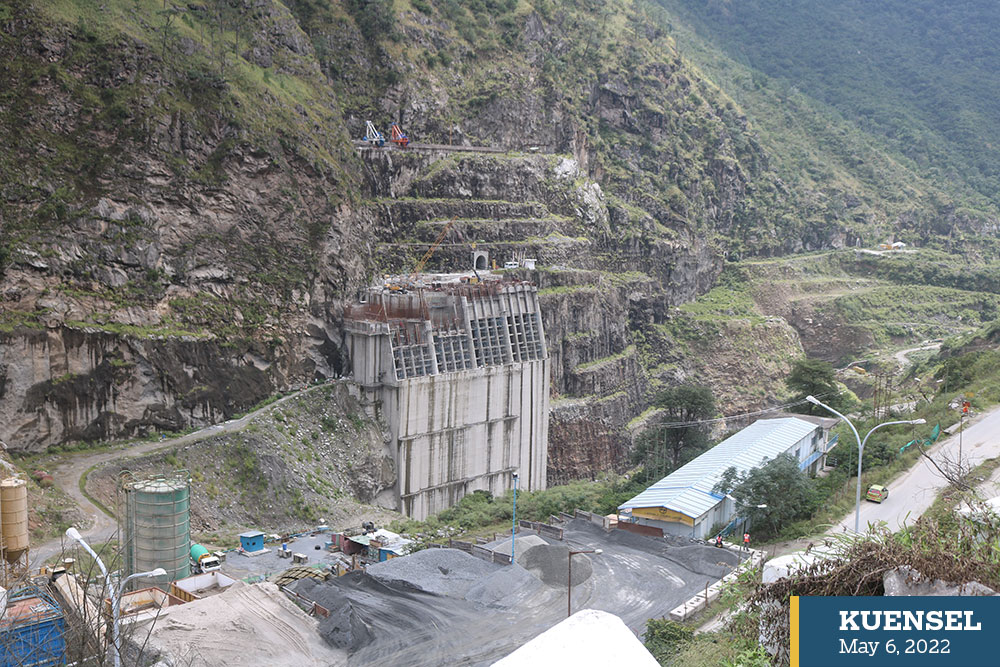Dechen Dolkar
A detailed project report (DPR) has found construction of barrage feasible if the project authorities of the 1,200MW Punatsangchhu Hydroelectric Project (PI) decide to go ahead with barrage instead of the dam.
The DPR, prepared by a company from Switzerland, Stucky, at a cost of Nu 150 Million (M), found the barrage to be feasible at a location 2.6 km upstream from the current PI dam site.
The final DPR for the barrage option for the PI project was submitted to the Department of Hydropower and Power Systems with the Ministry of Economic Affairs on April 22 for onward submission to the government and the government of India.
According to the Druk Green Power Corporation (DGPC), based on very extensive geophysical and geotechnical investigations including various laboratory tests, and detailed analysis, design computations and numerical model studies, Stucky has confirmed the feasibility and soundness of the proposed barrage structures.
Officials from DGPC said that the two governments will review the DPR and consider a way forward with the project.
The consultant studied two locations for the barrage.
The two alternatives–Axis 1 and 3–Axis 1 is located some 5.6 km upstream of the current PI dam site, directly downstream of the Wangdi Rapids, whilst Axis 3 is located 2 km downstream of Axis 1. Axis 1 is at Hesothangka.
“Based on preliminary geological and geotechnical investigations, Axis 3 has been selected as the final location of the barrage,” a DGPC official said, adding that in-depth geotechnical investigations were carried out in the selected location for confirmation of the feasibility and optimisation of barrage structures.
The overall duration of the construction of barrage and ancillary structures including twin tunnels of 3.20km connecting the barrage and existing desilting chambers is estimated to take four to five years.
The cost of construction of the barrage is estimated at Nu 16 to 18 Billion (B).
Challenges during preparing DPR
Officials from DGPC said the requirements for geological and geotechnical investigations were a lot more demanding than other DPR preparations.
Considering the importance of ensuring reliable input data, a specialised drilling company, Fugro Geotech (India) Pvt. Ltd., had to be engaged. The officials said that a number of problems were faced initially in mobilising drilling rigs and specialised manpower from other work locations in India due to the Covid-19 travel and movement restrictions.
A geotechnical expert from Switzerland was also engaged for core drilling supervision at the site to ensure accurate interpretation and collection of proper samples to be tested in laboratories in Bhutan and India. The expert teams had to undergo the mandatory quarantine on entry into Bhutan.
Officials said that when the core drilling works were about to be completed, there was a complete lockdown at the Punatsangchhu projects’ area due to numerous incidences of Covid-19 positive cases.
The Wangdue Covid-19 task force facilitated the movement of the camps for the core drilling team, the geotechnical expert and the support team from DGPC to the opposite bank of the Punatsangchhu.
Core drilling and collection of samples was completed working in a bubble mode at the end of February.
DGPC officials said that after incorporating the results from the geotechnical investigations, Stucky has updated the geological and geo-mechanical model and 3D structural analysis, and finally completed the preparation of DPR for the barrage option.
The decision to construct the barrage came after the right bank of the dam experienced multiple landslides. The project witnessed its first slide in July 2013, followed by a slide in August 2016, and another in January 2019.


